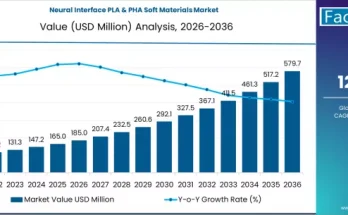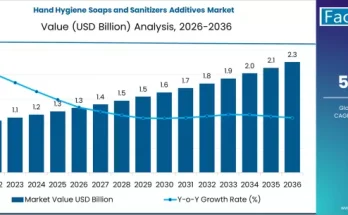As the global population ages at an unmatched rate, the demand for elder care products and services is rising. This demographic shift not only highlights the urgent need for improved healthcare solutions but also presents plenty of opportunities for innovation within the healthcare industry.
Below are five key trends shaping the future of elder care products and how they offer significant opportunities for healthcare providers and businesses alike.
- Rise in Mobility Aids
- There is a growing market for mobility aids with advanced features (like GPS and fall detection), and adaptive equipment that promotes independent living for seniors.
- Leading companies in this sector include Pride Mobility, known for durable power wheelchairs and scooters, Drive DeVilbiss Healthcare with a wide range of walkers and mobility scooters, and Invacare specializing in ergonomic wheelchairs.
- EZ-ACCESS provides essential accessibility solutions such as ramps, facilitating safe movement for seniors at home.
The trend is growing because the aging global population is experiencing increased mobility challenges due to conditions like arthritis. Technological advancements have enhanced the usability and comfort of mobility aids, supporting seniors’ desire to maintain independence. Investing in these aids helps reduce healthcare costs by reducing the risk of falls and injuries, promoting overall well-being among aging individuals worldwide.
- Real-Time Monitoring and Telemedicine are gaining traction
- Wearable health devices like the Apple Watch and Fitbit are essential for monitoring seniors’ health in real-time. They come with features like fall detection, continuous heart rate monitoring, and ECG capabilities tailored for older adults. These devices help seniors manage their health proactively and give healthcare providers important data for remote monitoring and early action.
According to our detailed analysis, the global elder care product industry, valued at US$ 29,600.2 million in 2024, is projected to grow to US$ 56,719.4 million by 2034.
Companies like Medtronic have developed wearable devices that track glucose levels and heart rhythms, allowing seniors with chronic conditions to manage their health more effectively and reduce the need for frequent hospital visits. This trend is driving the expansion of telemedicine and virtual healthcare services, allowing seniors to access medical expertise from the comfort of their homes while minimizing healthcare costs associated with in-person consultations.
- Rise in demand for Medication Management Solutions
- Managing multiple medications can be challenging for seniors, leading to medication errors, non-adherence, and adverse health outcomes. Medication management solutions, such as automated pill dispensers, smartphone apps for medication reminders, and electronic health records, are transforming how older adults manage their prescriptions and follow treatment plans.
- Companies like Hero Health have developed automated medication dispensers that sort pills by dose and schedule, making sure that seniors take the right medications at the right time.
- These devices are equipped with reminders and alerts to notify users and caregivers of missed doses or potential interactions. This improves medication adherence and reduces the risk of hospitalizations due to medication-related issues.
- Managing multiple medications can be challenging for seniors, leading to medication errors, non-adherence, and adverse health outcomes. Medication management solutions, such as automated pill dispensers, smartphone apps for medication reminders, and electronic health records, are transforming how older adults manage their prescriptions and follow treatment plans.
This trend is driven by the aging population’s increasing need for assistance with complex medication regimens.
As seniors face challenges like forgetfulness and multiple prescriptions, these solutions, including pill organizers and automated dispensers, enhance safety by reducing errors and promoting independence. Technological advancements further bolster this trend with smart devices and apps that offer reminders and connectivity to caregivers. Ultimately, these innovations aim to improve seniors’ quality of life by supporting their ability to manage medications effectively at home, while also easing the burden on caregivers.
Surge in Telehealth and Remote Monitoring for Elder Care
- Telehealth and remote monitoring have become essential components of elder care, providing seniors with convenient access to healthcare services and enabling healthcare providers to monitor patient’s health remotely. The COVID-19 pandemic accelerated the adoption of telehealth technologies, highlighting their potential to deliver cost-effective and accessible healthcare solutions for older adults.
- Companies such as Doctor on Demand and TytoCare offer telehealth platforms that cater specifically to seniors, providing virtual consultations, remote monitoring of chronic conditions, and post-acute care services. These platforms utilize video conferencing, wearable devices, and home health kits to facilitate seamless communication between seniors and healthcare providers, improving care coordination and reducing the need for unnecessary hospital visits.
The aging population’s increasing healthcare needs and advancements in digital health technologies is moving this trend forward. These solutions enable seniors to access healthcare services conveniently from home, eliminating the challenges of travel.
Remote monitoring tools, including wearable devices and health apps, provide real-time health data, allowing healthcare providers to monitor seniors’ conditions closely and intervene promptly when needed. This proactive approach improves overall care management, reduces hospital admissions, and lowers healthcare costs.
Additionally, telehealth meets the preferences of many seniors who prefer the comfort and convenience of receiving care at home while ensuring continuous monitoring and timely medical consultations.
Growing Adoption of Personal Emergency Response Systems (PERS)
Personal emergency response systems (PERS) are essential for seniors, providing quick access to emergency help in case of falls, accidents, or medical issues. These systems often include wearable alert buttons or pendants that seniors can use to notify caregivers or emergency responders.
- Companies like Life Alert and Medical Guardian offer PERS with GPS tracking and two-way communication, ensuring precise location tracking and instant communication. This technology offers peace of mind to seniors and their families by ensuring prompt assistance during emergencies.
Integrating PERS with smart home technologies further improves their effectiveness by automating emergency alerts to caregivers or healthcare providers. As the elderly population grows, the need for reliable emergency response systems increases. PERS devices, typically worn as pendants or bracelets, allow seniors to help with the press of a button, whether at home or outdoors.
Advancements in technology have made PERS more user-friendly and capable of integrating with other smart home devices and mobile apps, adding features like GPS tracking and fall detection.
The growing popularity of PERS reflects a shift towards empowering seniors to live independently while reassuring them and their families that help is readily available, enhancing their quality of life.
These trends highlight the growing need for innovative elder care solutions.
By addressing mobility, health monitoring, medication management, telehealth, and emergency response, the healthcare industry can significantly improve the quality of life for seniors, ensuring their safety, independence, and well-being.



